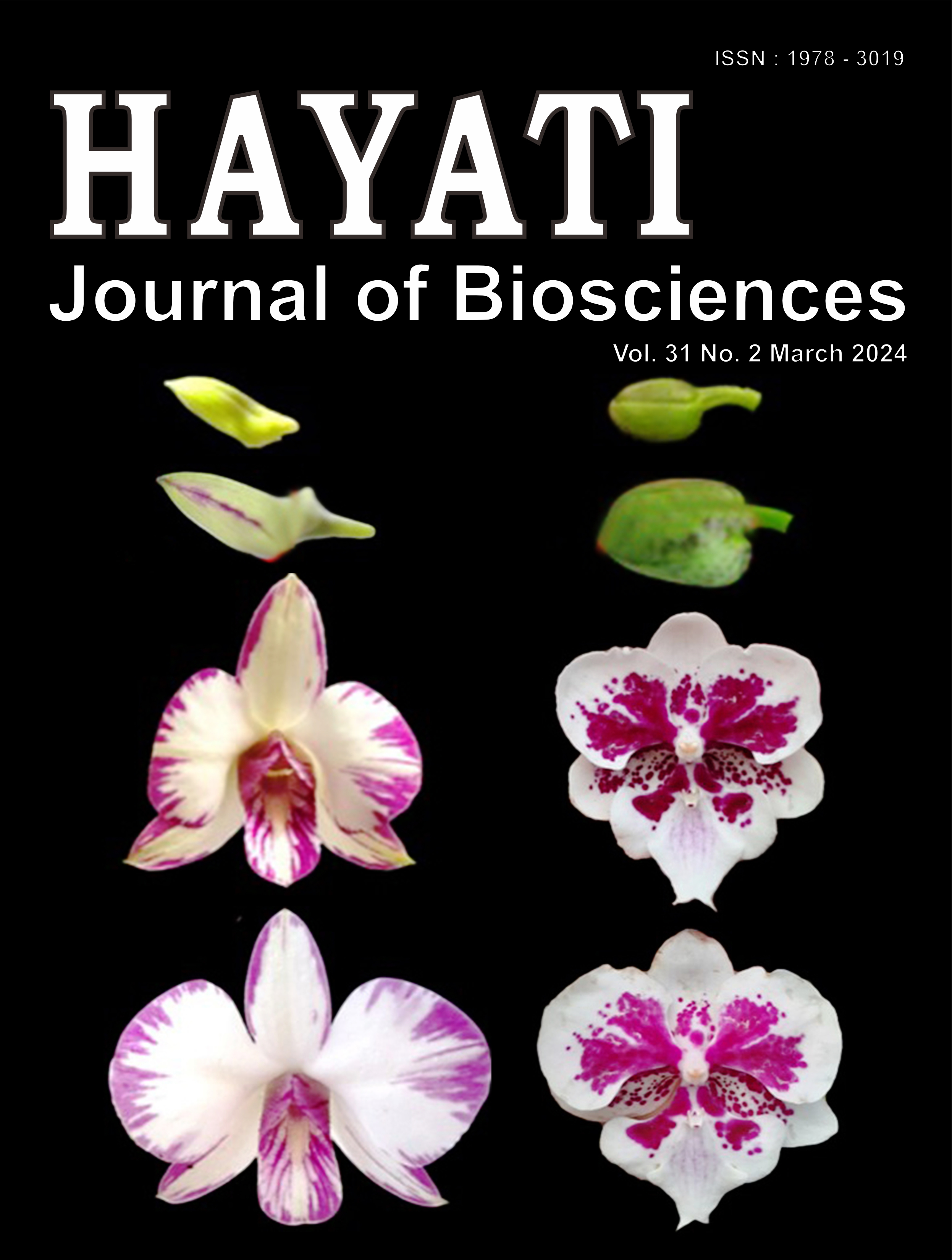Naringin Effect on SARS-CoV-2 Pseudovirus Entry and Spike Mediated Syncytia Formation in hACE2-overexpressing Cells
Abstract
A molecular docking study demonstrates the interaction between naringin, a citrus flavonoid, with SARS-CoV-2 spike RBD. Nevertheless, in vitro investigation of the inhibitory effect of naringin on SARS-CoV-2 entry and syncytia models has yet to be carried out. We synthesized VSV∆G-GFP/Spike* pseudovirus (PSV) as a SARS-CoV-2 model by pseudotyping VSV∆G-GFP/S* in BHK-21 cells overexpressing the SARS-CoV-2 spike glycoprotein. In the SARS-CoV-2 PSV entry assay, we utilized CHO-K1 cells transfected with hACE2 plasmid, which were then treated with naringin and SARS-CoV-2 PSV/naringin. After 16-18 h incubation, PSV internalization represented by the GFP signal was observed under a fluorescence microscope. Immunofluorescence staining was also performed to probe the SARS-CoV-2 spike and confirm the PSV entry. We performed a syncytia assay using 293T cells co-transfected with SARS-CoV-2 spike/hACE2. Six hours after transfection, the cells were treated with naringin and incubated for another 16-18 hours. Then, we observed syncytia using a phase contrast microscope. Based on fluorescence foci quantification, the results indicated that naringin might inhibit SARS-CoV-2 PSV entry at a concentration of 100 µM (P<0.05). However, naringin did not prevent syncytia formation compared to solvent control. These PSV entry and syncytia assay results suggested that naringin potentially inhibited SARS-CoV-2 viral infection but not cell-to-cell viral transmission.
Downloads
Copyright (c) 2023 Endah Puji Septisetyani, Pekik Wiji Prasetyaningrum, Komang Alit Paramitasari, Ahmad Suyoko, Alayna Lillahida Indri Himawan, Salsabila Azzahra, Popi Hadi Wisnuwardhani, Khairul Anam, Ratna Dwi Ramadani, Adi Santoso, Ratih Asmana Ningrum, Neng Herawati, Yana Rubiyana

This work is licensed under a Creative Commons Attribution-NonCommercial 4.0 International License.
HAYATI J Biosci is an open access journal and the article's license is CC-BY-NC. This license lets others distribute, remix, tweak, and build upon author's work, as long as they credit the original creation. Authors retain copyright and grant the journal/publisher non exclusive publishing rights with the work simultaneously licensed under a https://creativecommons.org/

























.png) IPB University
IPB University Department of Biology
Department of Biology The Indonesian Biological Society
The Indonesian Biological Society 

